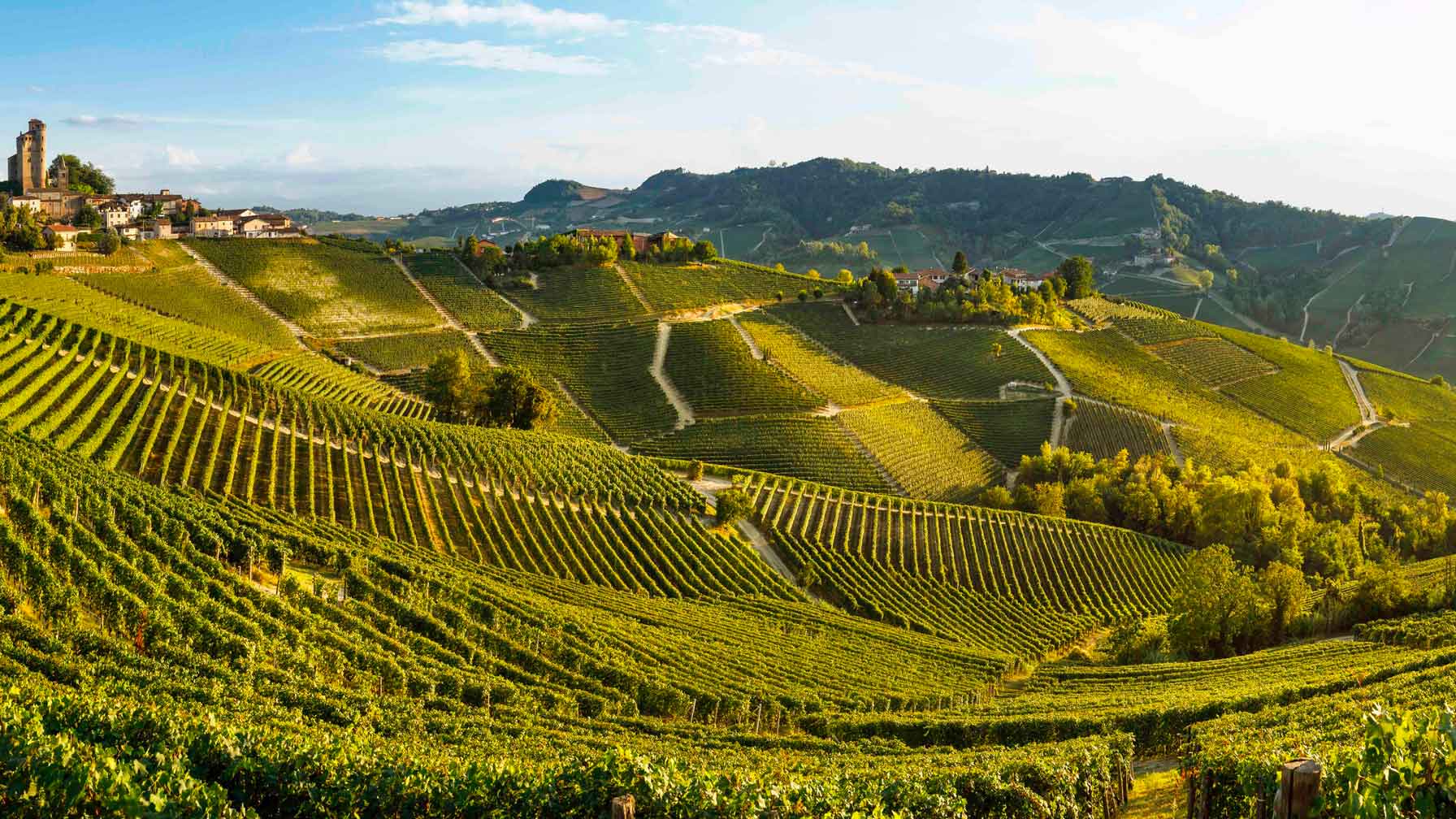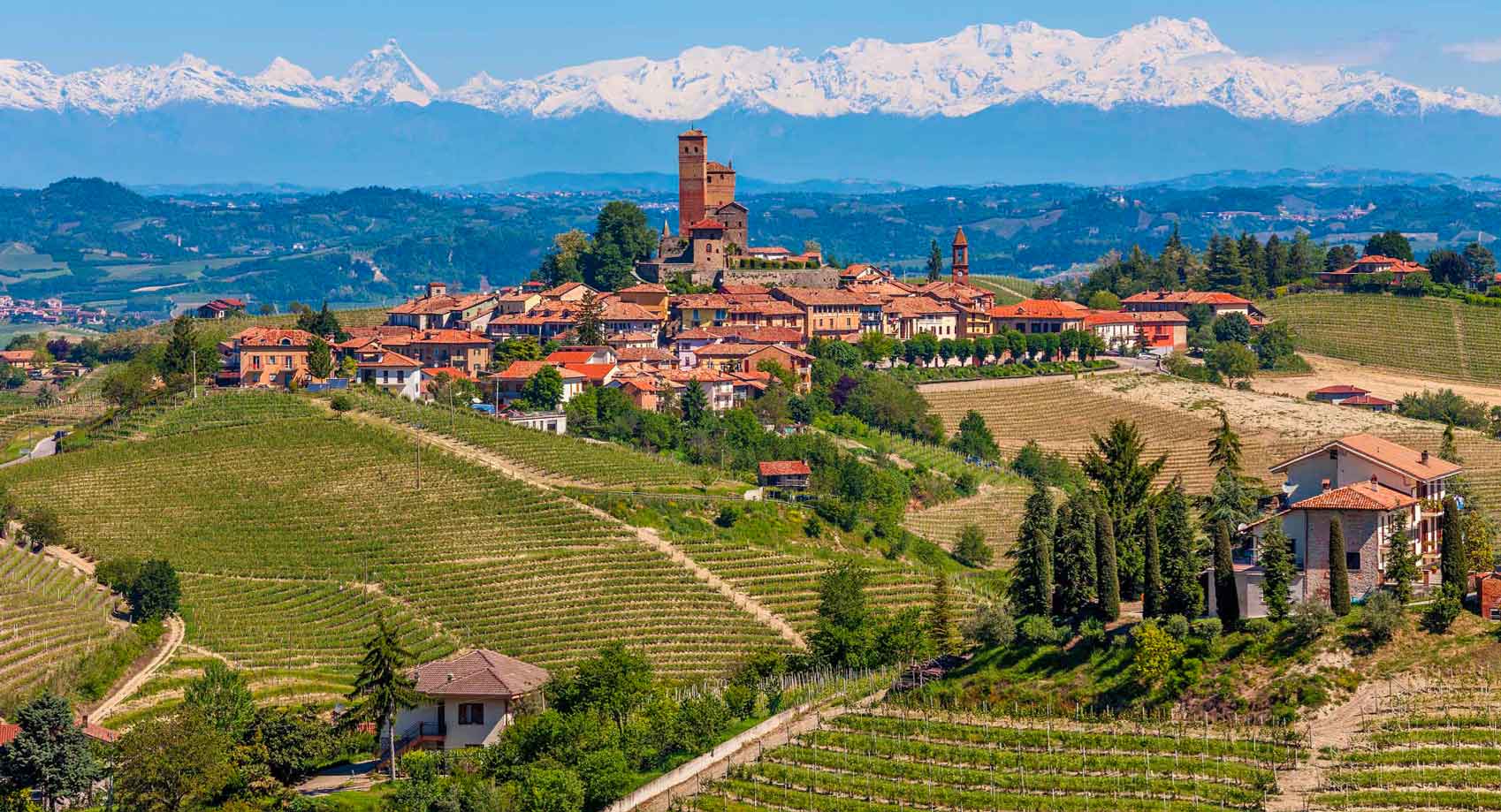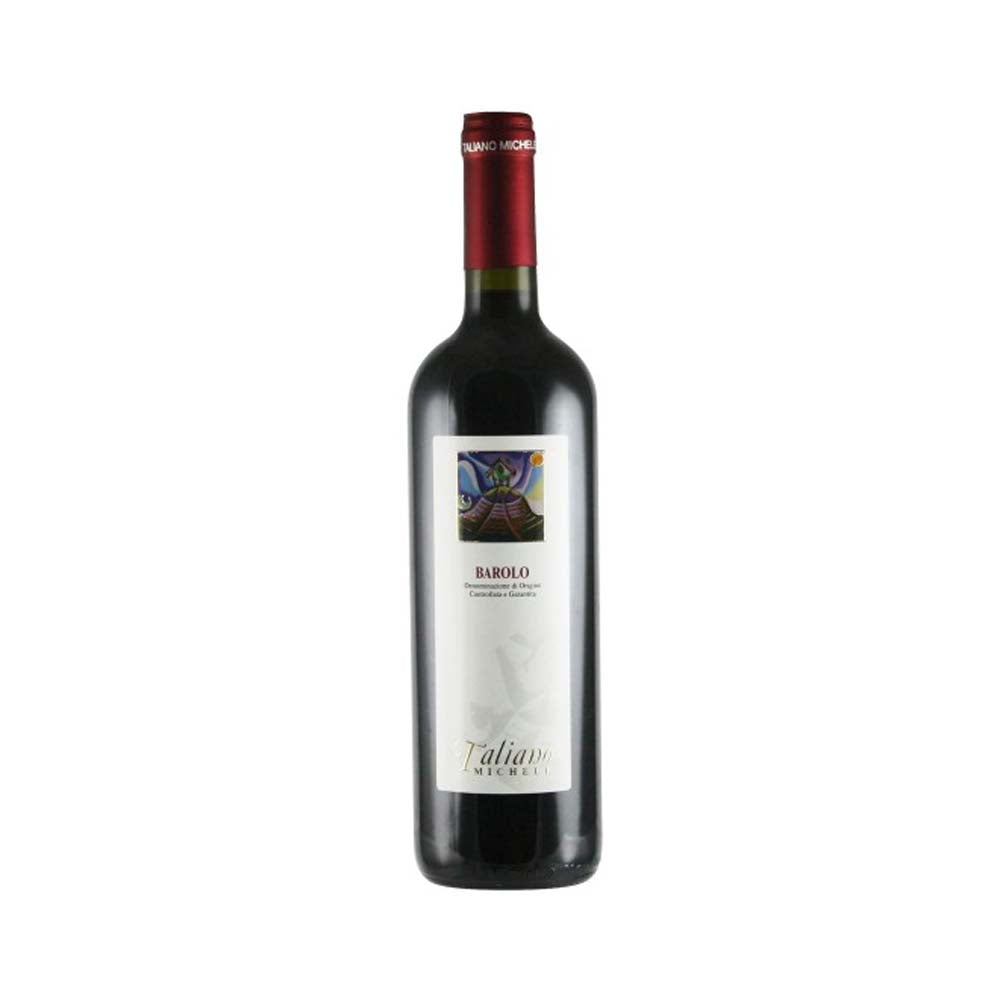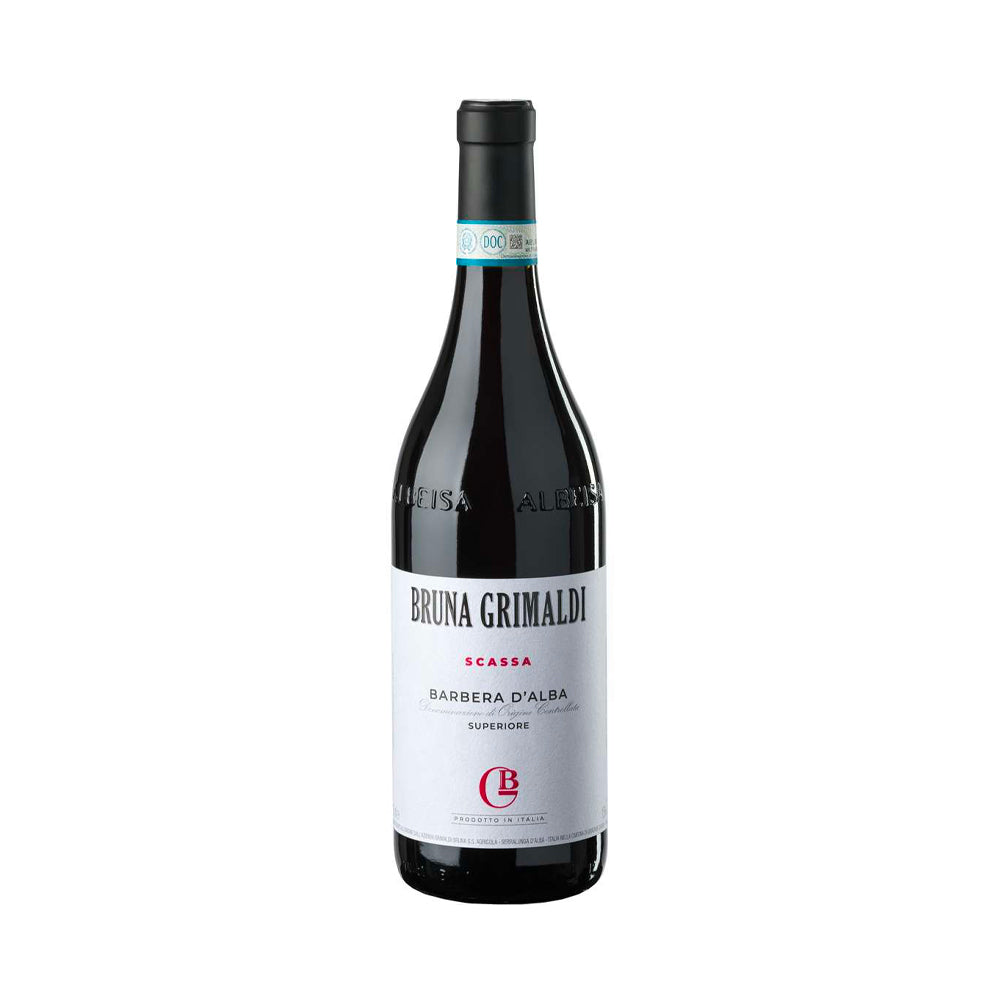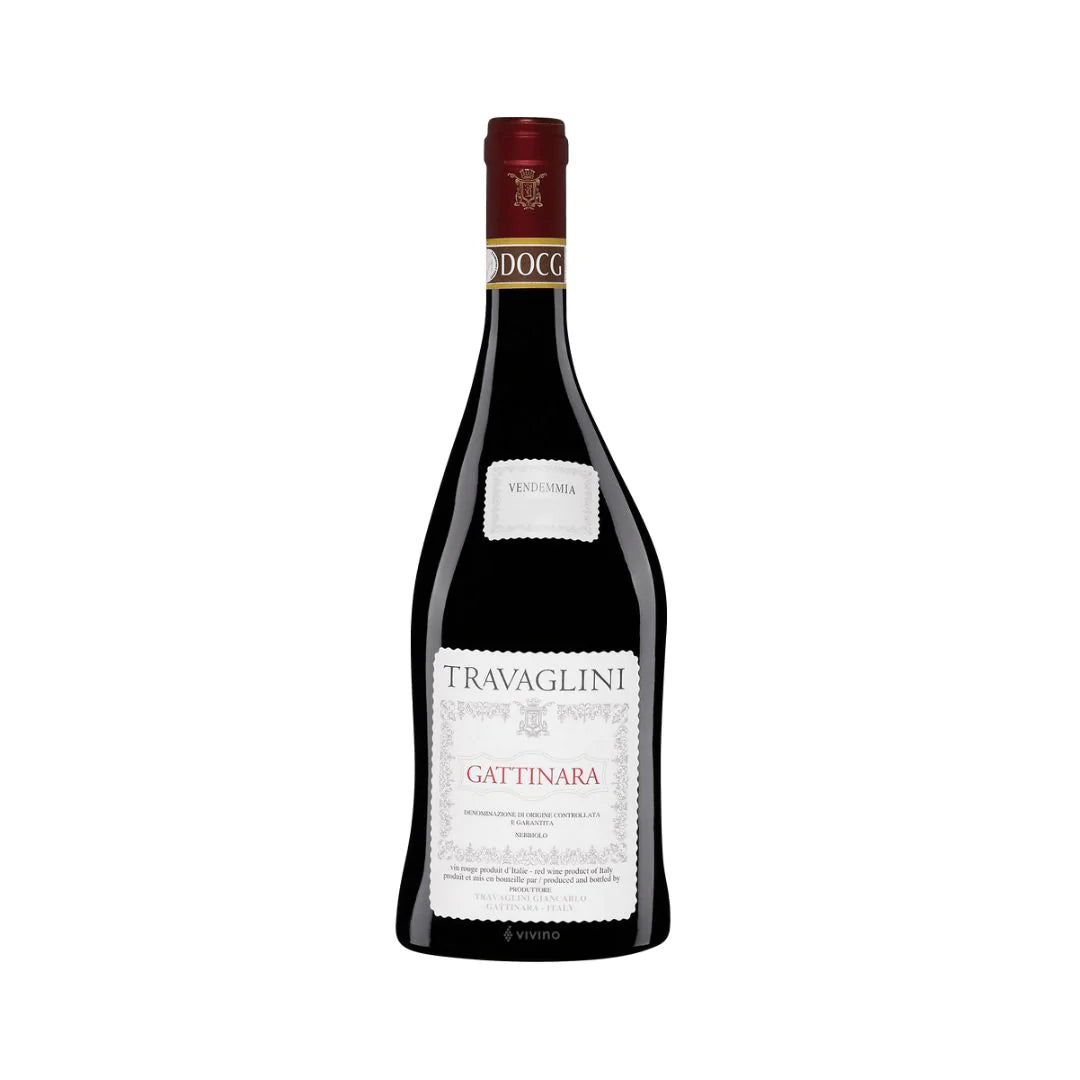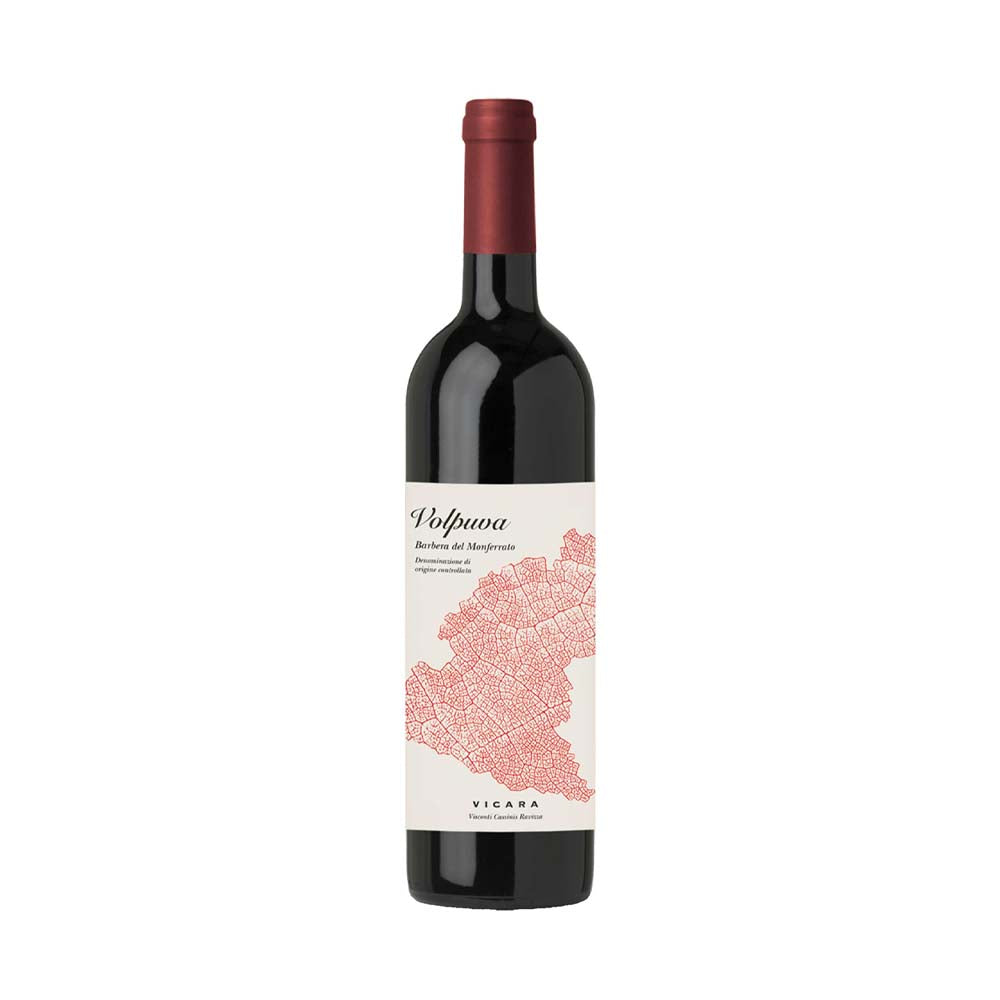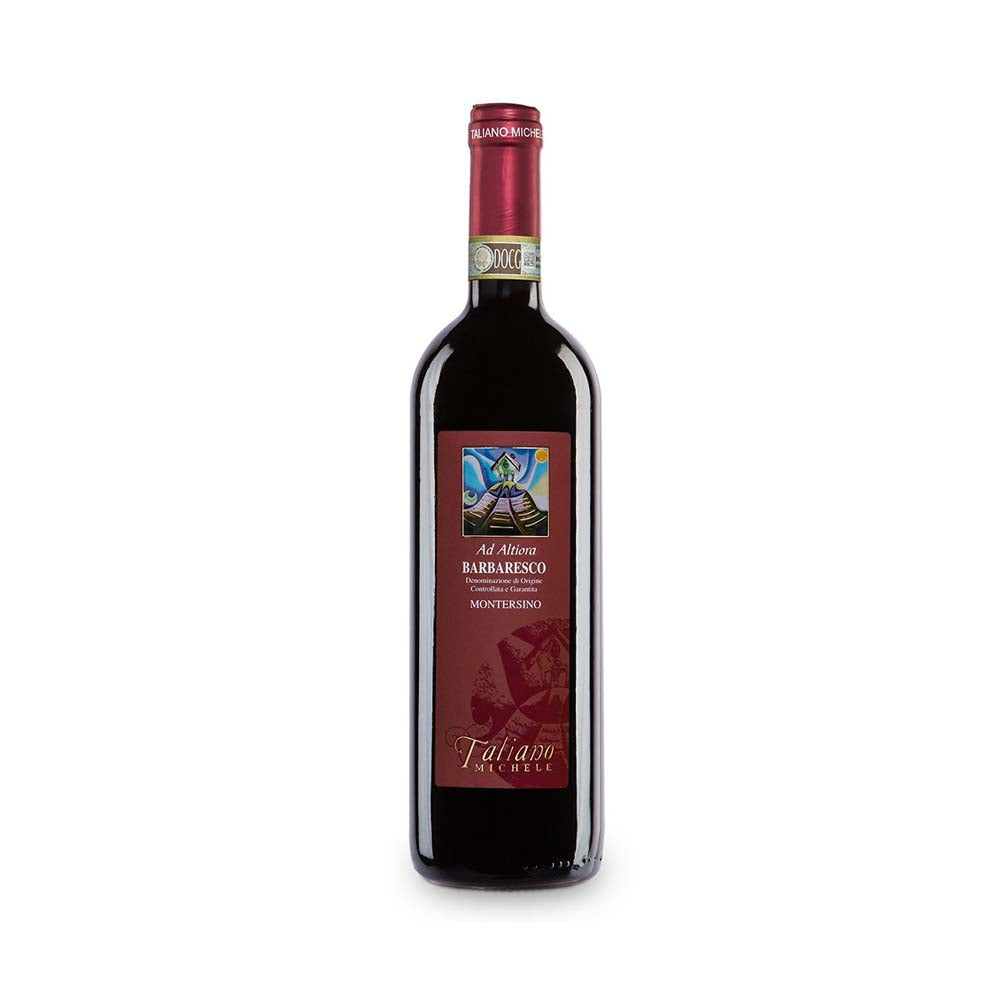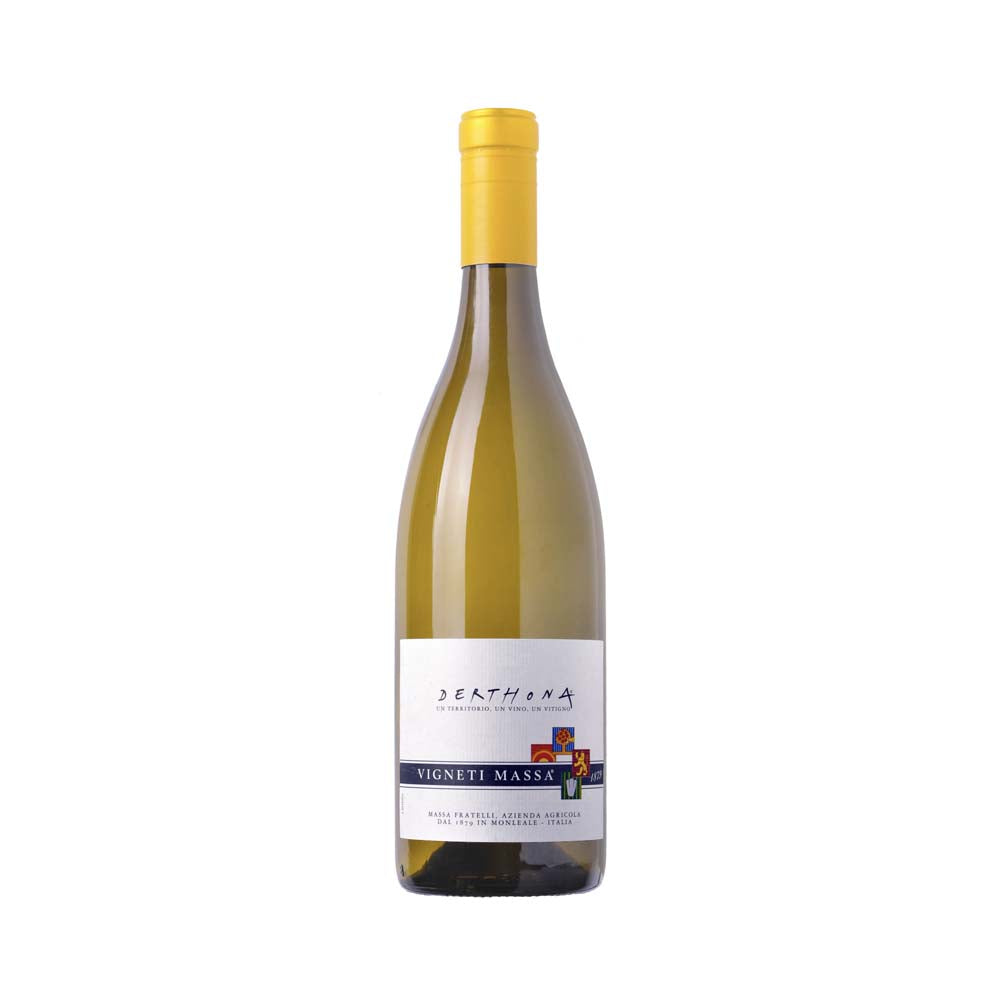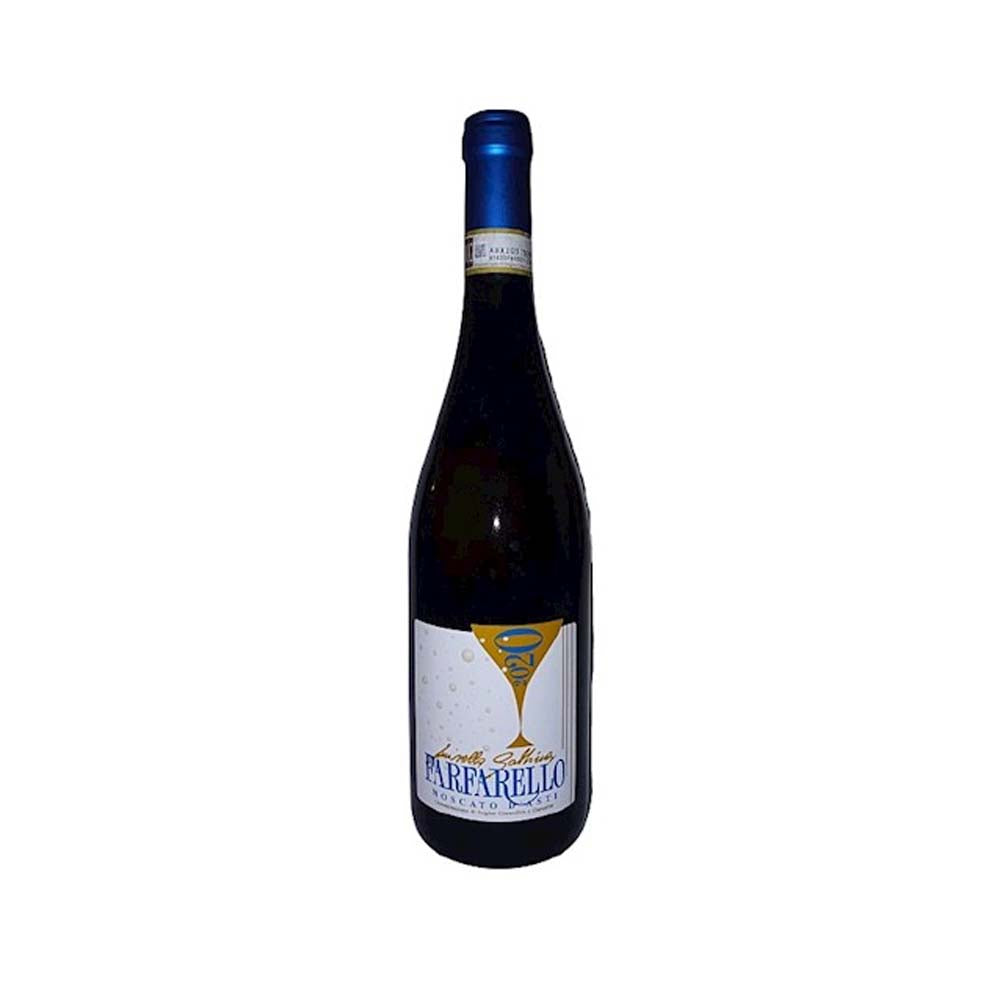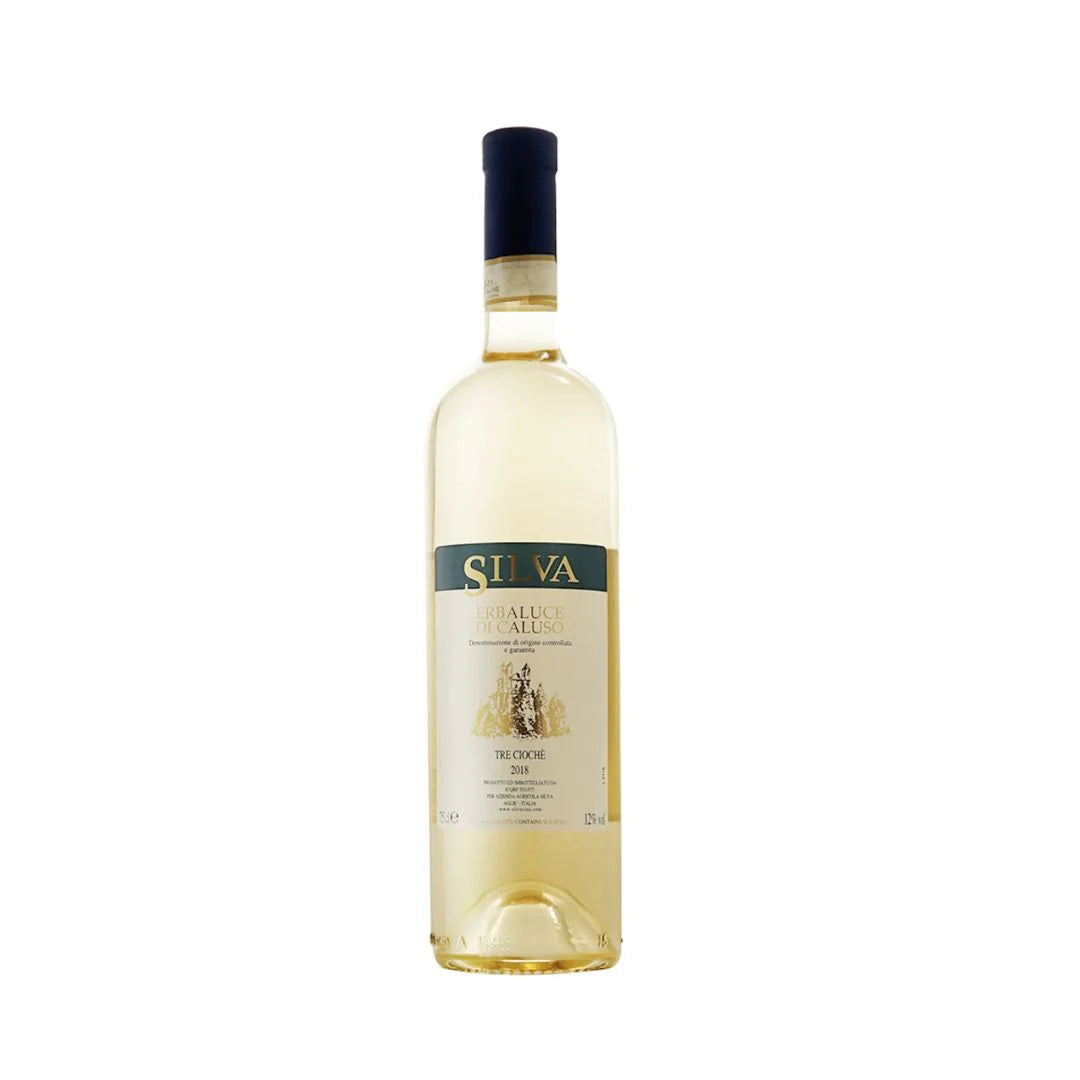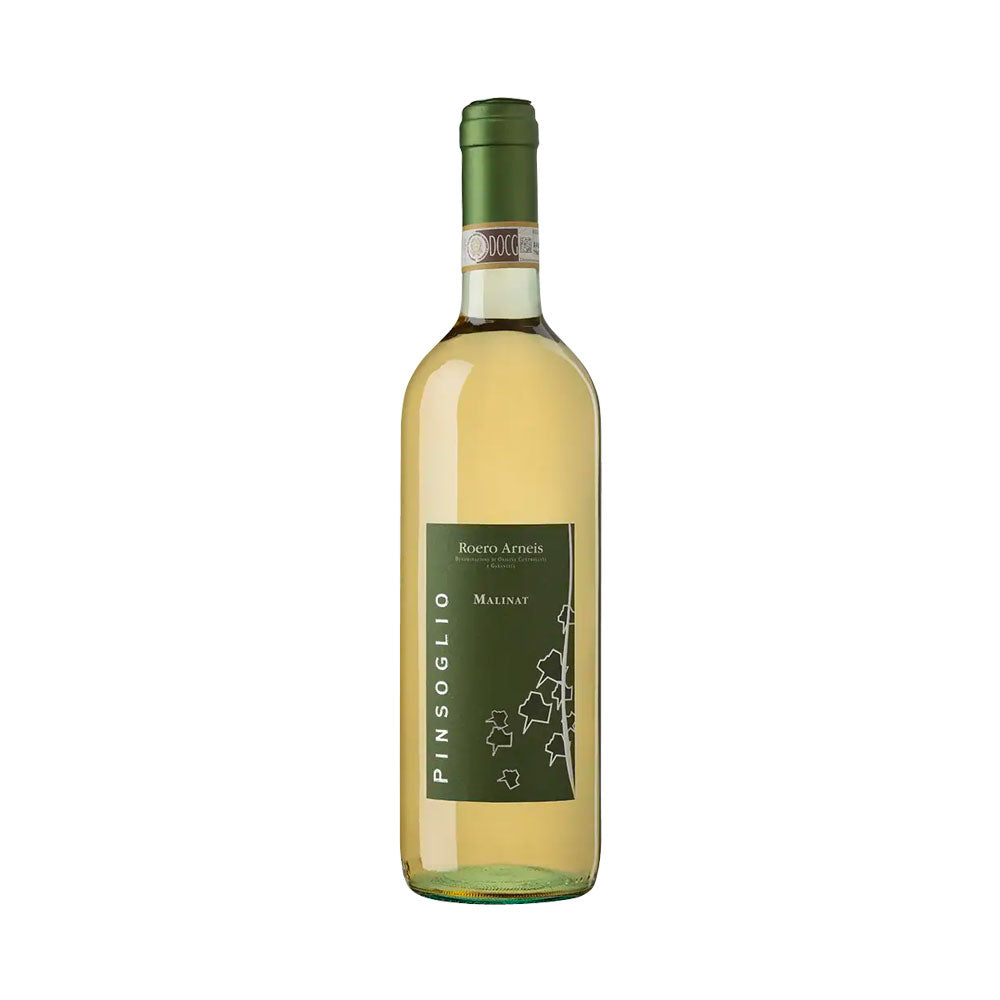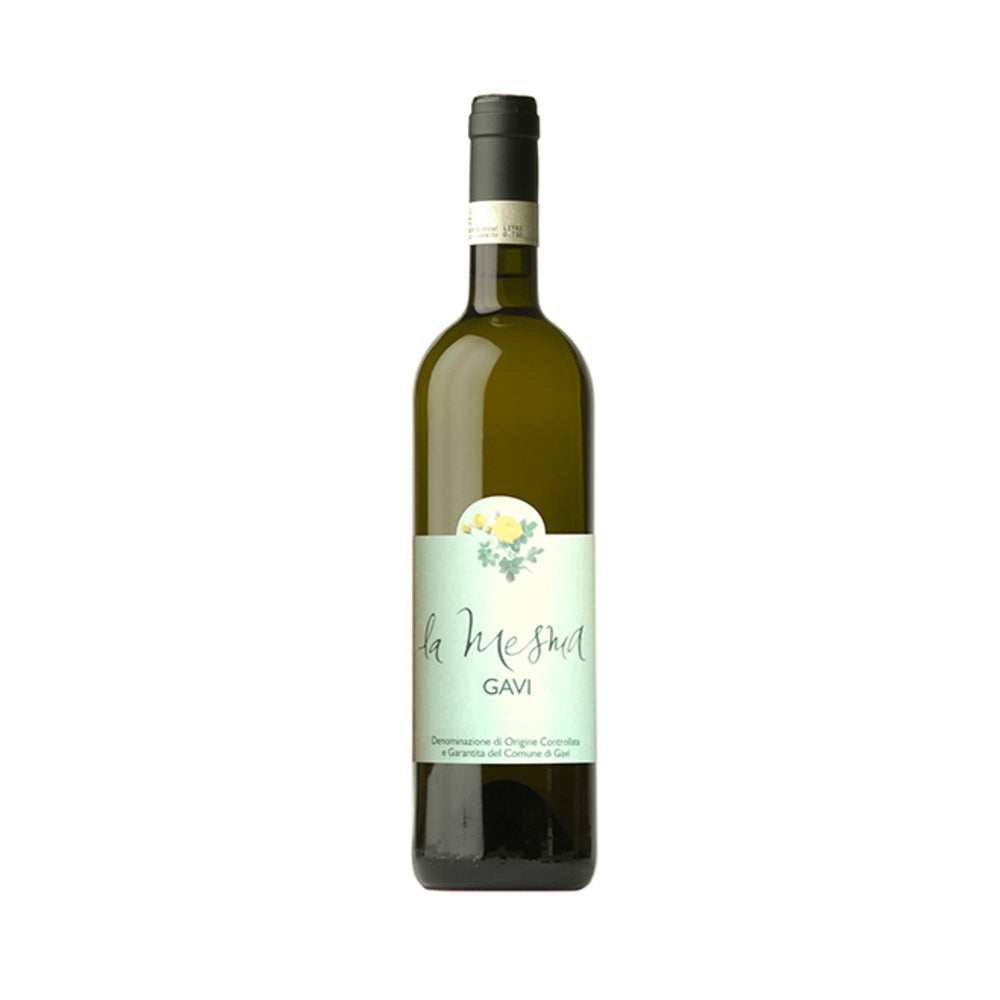FINE PIEDMONT WINES
5 Unique Reds and 5 Whites Recommended by Sommeliers
The production areas of the finest wines of Piedmont
We are in the region that has the most denominations in Italy, one of the wine territories that has written the most brilliant Italian wine history.
In this article we see the finest wines from Piedmont recommended by our sommeliers.
The winemaking areas in which the finest wines of Piedmont are produced are the following.
Langhe
The Langhe , located between the cities of Alba and Asti, are famous throughout the world especially for their renowned red wines.
The Langhe were created by uplift from the sea 14 million years ago and are made up of marly-limestone formations.
In La Morra and Barolo (blue marl soils) elegant wines are produced, with medium alcohol content, with intense and velvety aromas; in Serralunga, Castiglione Falletto, Monforte (sand and limestone soils) wines with a good alcohol content, austere and robust are produced.
In particular, Barolo and Barbaresco , produced in the province of Cuneo, are the wines that reach the pinnacle of elegance and complexity among the wines of Piedmont (and beyond).
Monferrato
The hills of Monferrato , divided into Alto and Basso, are another wine treasure of Piedmont.
They are especially known for Barbera d'Asti , Dolcetto di Ovada Superiore and Derthona (Timorasso) .
Roero
In the Roero area, in the province of Cuneo, Nebbiolo grapes produce elegant and refined red wines, such as Roero and Roero Riserva , both DOCG.
These wines stand out for their structure and important aromatic complexities. Arneis , a white wine, is also unforgettable.
Gavi
The Gavi region is famous for its very high quality white wine, the Gavi DOCG , a wine elaborated with the courteous, fresh and lively native wine.
Asti
Moscato d' Asti is produced in the Asti area, a sweet and sparkling wine much loved for its floral and fruity aromas but also Barbera d'Asti DOCG and Nizza d'Asti DOCG .
Canavese
The Canavese area, in the province of Turin, is renowned for its Erbaluce di Caluso DOCG , a unique and refreshing white wine (also in a sparkling version), characterized by mineral notes and a pleasant acidity.
Ossola Valleys
The Ossola valleys , in the Piedmont Alps, mainly produce prünent, an indigenous black grape variety, a clone of Nebbiolo.
Valsesia
Valsesia , in the north of Piedmont, is especially known for Gattinara DOCG and Ghemme DOCG : wines made from Nebbiolo grapes, of great character, which require refinement in wooden barrels.
The most common vines in Piedmont
Piedmont has a very rich variety of vines that contribute to the production of some of the country's finest wines.
From Nebbiolo to Barbera , Piedmontese grapes express unique characteristics that reflect the territory and the skill of its winemakers. Alongside the native vines, non-native grapes are also grown in Piedmont which further enrich the variety of wines produced. Let's discover together the main vines of both categories.
Typical Piedmontese vines
Here are the main native black grape varieties of Piedmont
Nebbiolo 🍷
Nebbiolo is the main grape variety of Piedmont and is responsible for two of the most famous red wines in the world: Barolo and Barbaresco.
Nebbiolo produces intense, complex and well-structured wines, with aromas of red fruit, roses, tobacco and spices .
Barbera 🍷
Still on the black berry, Barbera is another native vine, the most widespread in Piedmont, known for its liveliness and freshness. Barbera wines offer pleasant acidity, a fruity character and a versatile aromatic profile that adapts to different winemaking styles .
Sweetie 🍷
Dolcetto is a black grape variety that produces light and fruity wines, appreciated for their easy drinking and lively character, including hints of black cherry, black cherry and almond .
Croatian 🍷
Croatina is an indigenous vine that occupies an important position in Piedmont: widely cultivated in the Monferrato and Oltrepò Pavese areas, it stands out for its versatility (it can be used for the production of red and sparkling wines).
Croatina is appreciated for its fruity character and its soft structure, with aromas of black fruit, such as cherry and plum, and can express spicy and tobacco nuances .
Freisa 🍷
Freisa is an indigenous Piedmont vine that has a long history. Freisa is known for its lively acidity, firm tannins and distinctive aromatic profile .
The red wines obtained from freisa have an intense ruby color and an aromatic complexity that ranges from notes of red fruit, such as cherry and raspberry, to earthy and spicy hints. On the palate, you can perceive present but soft tannins, which give structure and balance to the wine. Depending on the winemaking techniques adopted, Freisa wines can be both fresh and fruity, suitable for young consumption, or more structured and capable of refinement. In addition to red wines, Freisa is sometimes used to produce sparkling wines with a lively and fruity character.
Grignolino 🍷
Grignolino is an indigenous Piedmont vine mainly grown in the Monferrato areas, in particular in the provinces of Asti and Alessandria.
The wines obtained from Grignolino are characterized by a pale, light pink color and a moderate tannic structure. They have an aromatic profile with hints of strawberries, cherries, aromatic herbs and spices . Their lively acidity gives them a fresh and lively character, while the sweet and soft tannins make them pleasant on the palate.
Grignolino presents itself as a fruity, fresh and versatile wine that can be consumed young. However, some producers choose to use more complex winemaking methods, such as wood aging or extended maceration, to create more structured and complex wines that can age.
Ruchè 🍷
Ruchè un is an indigenous Piedmont vine originating from the Castagnole Monferrato area, in the province of Asti, known for the production of aromatic red wines, with hints of flowers, in particular rose and violet, red fruit and spices. Ruchè is also appreciated for its balanced structure, with silky tannins and a pleasant acidity.
Albarossa 🍷
Albarossa is a hybrid vine obtained from the cross between Barbera and Nebbiolo in 1938 by Professor Giovanni Dalmasso at the Center of Ampelography and Oenology of Asti. Albarossa is mainly cultivated in the areas of Monferrato, Asti and in the province of Alessandria , and is known for producing full-bodied, structured and aromatic red wines, with aromas of ripe red fruit, such as cherries and plums, alongside spicy and earthy nuances .
Black Moscato 🍷
Moscato is a very widespread and important grape variety for Piedmontese winemaking, in its white and black variants, both appreciated for their distinctive aromatic profile and sweet character.
Black Moscato or Moscato di Scanzo produces sweet and aromatic red wines, with an intense ruby color and an intense bouquet of ripe red fruit, spices and floral notes.

Here are the main native white grape varieties of Piedmont
White Moscato 🥂
White Moscato is the most cultivated white grape variety in Piedmont and produces sweet, sparkling and aromatic wines. These wines are famous for their intense and seductive aromas of flowers, tropical fruit, citrus and honey. The balanced sweetness, light effervescence and fresh acidity make them pleasant and refreshing. Also worth mentioning is the yellow muscat , whose production is decidedly lower than the white one.
Arneis 🥂
Arneis is a native white grape variety that offers fresh, fragrant and delicate wines. This grape is mainly used to produce Roero Arneis, a refined and aromatic white with notes of white flowers, peach and apple .
Timorasso 🥂
Timorasso is an indigenous grape variety that is experiencing a real rebirth in Piedmont. This vine had almost been forgotten, but in recent decades it has been rediscovered and valorised by passionate producers starting with Walter Massa. It produces white wines of great personality, with a unique aromatic complexity. Timorasso wines are characterized by a golden yellow color, a structured body and notable acidity, with intense aromas of exotic fruit, citrus fruits, white flowers and a pleasant mineral note . Particularly appreciated for its ability to age, over the years it develops further complexity and softness.
Courteous 🥂
Cortese is another native grape variety of Piedmont, known for being the main protagonist of Gavi white wine. It stands out for its freshness, lively acidity and delicate aromatic profile with aromas of citrus, white peach and wild flowers .
Favorite 🥂
The favorite is a native white grape variety from Piedmont, grown mainly in the Langhe, also known as "Vermentino Piemontese" or "Pigato Bianco" and known for its freshness, lively acidity and aromatic aroma . Often used to produce dry and sparkling wines.
Erbaluce 🥂
Erbaluce is an indigenous white vine from Piedmont, originating from the Caluso area, in the province of Turin. This grape variety is known for producing fresh, vibrant white wines and complex aromatic bouquet. This grape variety is considered a hidden gem of Piedmont and is gaining more and more recognition thanks to its quality and distinctive character.

International vines in Piedmont
The production of wines from international and non-native vines is much less extensive than that from native grapes, however even in Piedmont vines from other countries are grown, which have adapted perfectly to the Piedmontese territory.
Here are the main international vines of Piedmont
Chardonnay 🥂
Chardonnay is one of the most widespread and appreciated international grape varieties. In Piedmont, it produces elegant, complex and structured white wines, with notes of tropical fruit, citrus and vanilla.
Cabernet sauvignon 🍷
Cabernet sauvignon , a vine originating from Bordeaux, France, has been successfully adopted in Piedmont in the black and white version and so has merlot - another international vine originating from Bordeaux - known for its softness. Merlot wines have hints of ripe red fruit, aromatic herbs and chocolate.
Which Piedmontese wines to buy?
DOCG, DOC and IGT recommended by our Sommeliers
Piedmont is renowned for the production of some of the most prized and appreciated wines in the country (and beyond).
Among the most important denominations of controlled and guaranteed origin (DOCG) is Barolo , an intense and structured red wine, considered the "king of wines" of Piedmont.
Another important DOCG is Barbaresco , also a red wine of great prestige, with elegance and aromatic complexity. Much less known are Piedmontese bubbles, which can reach absolute heights of quality and elegance as in the case of Erbaluce di Caluso DOCG Metodo Classico .
Piedmontese wines are much celebrated for their complexity and ability to age, thanks above all to native vines cultivated with wisdom such as Nebbiolo, Barbera, Dolcetto and many others.
The importance of Piedmont in the Italian and international wine context is reflected in the quality and prestige of its wines, which attract the attention of enthusiasts and experts from all over the world and involve both big names and the most hidden labels.
5 fine and exclusive Piedmontese red wines
5 fine and exclusive Piedmontese white wines
Compose your box of Piedmont wines with the advice of our Sommeliers
Piedmont is a region rich in denominations and unique wines, some well-known on the national and international scene, others less well-known.
The advice of expert sommeliers is essential to find and discover even the most hidden gems.
With Sommelier Wine Box discover the true excellence of Piedmont : our expert Sommeliers will guide you not only in the selection of the rarest and finest wines, but will offer you a unique tasting experience because it is totally personalized according to your tastes and needs.
19
DOCG
42
DOC
46.000
Hectares of vineyards
The numbers of Piedmont wine
17 DOCG and 42 DOC: the region with the most denominations in Italy.
17 DOCG and 42 DOC : Piedmont is the region with the most denominations in Italy, which cover approximately 85% of regional production.
DOCG of international fame : Barolo and Barbaresco, in particular, are Piedmontese denominations famous throughout the world.
There are 46,000 hectares of vineyards , with breathtaking landscapes: approximately 7% of the total Italian vineyard.
The wine-growing landscape of Piedmont has been included in the list of UNESCO World Heritage Sites with Langhe-Roero and Monferrato.
International recognition: Piedmontese wines do not go unnoticed on the world stage. Year after year, they are celebrated and rewarded with high scores and prestigious awards from critics and industry experts, testifying to the exceptional quality and constant research of Piedmontese producers.
The Piedmont wine industry plays a fundamental role in the economic growth of the region. Piedmontese wine tourism counts every year around 700,000 tourists from all over the world, for a total of 1.6 million overnight stays per year ( source: Piedmont Region ).
There are approximately 18,000 agricultural companies with a wine-growing focus.
280 industrial companies producing wines and spirits, with approximately 3,300 employees ( source: Piedmont Region ).
54 cooperative wineries with around 12,000 members ( source: Piedmont Region ).
The annual value of Piedmontese wine exports is 1 billion euros ( source: Piedmont Region ).
7 Wine Routes.
Piedmontese wine is closely linked to regional cuisine, which is famous for its gastronomic specialties. Piedmont is in fact a region rich in culinary traditions and boasts numerous food products with Protected Designation of Origin (DOP) and Protected Geographical Indication (PGI).
It boasts over 40 DOP and IGP products , ranging from meats, cheeses, cured meats, desserts and much more.
Among the best-known products we can mention Gorgonzola cheese, Castelmagno cheese, the white truffle of Alba, Cuneo ham, Piedmont hazelnut, Storo polenta and Baraggia Biellese and Vercellese rice.
These products with Protected Designation of Origin testify to the excellence and food and wine tradition of Piedmont, making it an irresistible destination for lovers of quality food.
Piedmontese wines are truly ambassadors of Italian wine excellence.
FAQ on fine white and red Piedmontese wines
How to understand which Piedmontese wine to buy?
To choose the Piedmontese wine to buy, take into consideration your personal taste and the occasion on which you will consume it.
Familiarize yourself with the typical Piedmont grape varieties and identify the style of wine you prefer, which can range from the freshness of Dolcetto to the complexity of Barolo.
Read the labels carefully to get information about the producer, the vintage and the grapes used.
Also consider food and wine pairings to amplify the experience. For more informed choices it is important to explore wineries to find the most interesting ones and take part in tastings. But above all, get advice from expert sommeliers.
Take advantage of their knowledge and passion and get advice on personalized labels. Leverage their expertise to discover new wines and producers, exploring the unique nuances of each label.
Where to buy fine wines from Piedmont?
Specialized wine shops: wine shops are shops specializing in wines, where you can find a curated selection of high-quality Piedmontese wines.
Ecommerce and online wine clubs: offer convenience and ease of search, allowing you to explore and purchase a vast selection of fine Piedmont wines, often with additional reviews and recommendations. Sommelier Wine Box is the best option!
In the cellar: if you want an on-site wine experience you can purchase the wines directly from the producers.
Wine fairs : Wine auctions and wine fairs are great places to find fine wines from Piedmont.
What are the best Piedmontese wines?
Piedmont is an internationally renowned wine region, with a wide range of fine wines to discover.
Among the most renowned types, Barolo and Barbaresco stand out, two iconic red wines made with the Nebbiolo grape.
These wines, belonging to the DOCG (Controlled and Guaranteed Designation of Origin), offer a complex structure, intense aromas of red fruit, floral notes and a long persistence.
Another jewel of Piedmont is Barbera, a vine that gives life to elegant red wines, characterized by a pleasant acidity and a fullness of fruit. These wines are particularly appreciated for their versatility in gastronomic pairings.
Dolcetto , on the other hand, produces lighter and fruitier red wines, with a pleasant freshness and drinkability.
Arneis , an indigenous grape variety from Piedmont, offers dry and aromatic white wines with floral and citrus notes. Chardonnay, present in the DOC, offers elegant white wines with a balance between fruity and buttery notes, perfect for accompanying fish and cheese dishes.
Finally, Moscato d'Asti , a sweet and sparkling wine, represents an authentic delight.
This wine, awarded the prestigious DOCG denomination, offers intense aromas of flowers and fruit, creating a sensation of freshness and pleasure on the palate.
Choosing a Piedmontese wine means immersing yourself in a wealth of flavors and traditions, with a wide variety of DOCG, DOC and grape varieties that make the region a true paradise for wine lovers.
What are the typical Piedmont vines?
Piedmont boasts a wide variety of native grape varieties (over 20) that give rise to some of the most popular wines in the world. Here are some of the typical Piedmont vines:
Nebbiolo: the king of Piedmontese vines and responsible for the production of prestigious wines such as Barolo and Barbaresco.
Barbera: One of the most widely planted grape varieties in the region and produces lively, fruity red wines.
Dolcetto: a versatile grape variety that gives rise to dry and fruity red wines.
Arneis : native white grape variety that produces dry and aromatic wines. Arneis stands out for its floral and citrus aromas and freshness.
Moscato: black and white. White Moscato is used to produce sweet, aromatic wines, such as Moscato d'Asti, known for its intense aromas of flowers and fruit.
How many wineries are there in Piedmont?
There are around 18,000 Piedmontese wineries. Many of these are small or very small wineries.
There are 280 industrial companies producing wines and spirits, with around 3,300 employees. 54 cooperative wineries with around 12,000 members.
What are the finest wines from Piedmont?
Piedmont's finest wines include:
Barolo DOCG : An icon of Piedmont, it is a complex and structured red wine, made with Nebbiolo grapes in the Barolo production area.
Barbaresco DOCG : Similar to Barolo, it is a refined and elegant red wine, also produced with Nebbiolo grapes in the Barbaresco production area.
Moscato d'Asti DOCG : Sweet and aromatic wine, available in white and red variants, produced in the Moscato d'Asti production area.
Chardonnay DOC : An elegant and balanced white wine, known for its fruity and buttery notes, produced in the Chardonnay DOC production area.
Barbera d'Alba DOC : An indigenous grape variety that produces lively red wines, with a pleasant acidity and fruitiness, in the Barbera d'Alba production area.
Dolcetto d'Alba DOC: Light and fruity red wine, appreciated for its drinkability and freshness, produced in the Dolcetto d'Alba production area.
Roero Arneis DOCG : White grape variety that gives life to dry and aromatic wines, with floral and citrus aromas, in the Roero Arneis production area.
Alta Langa DOCG : A high quality sparkling wine, produced according to the classic method, produced with the same technique as Champagne.
These wines, with their controlled and guaranteed designations of origin (DOC and DOCG), represent some of the oenological treasures of Piedmont and reflect the diversity and excellence of the region.
Which DOC and DOCG wines are there in Piedmont?
Piedmont boasts 19 controlled and guaranteed designations of origin (DOCG) and 42 controlled designations of origin (DOC) which cover a vast range of wine types.
Here are the main DOC and DOCG denominations of Piedmont:
Barolo DOCG: Red wine produced exclusively with Nebbiolo grapes, characterized by complexity and structure.
Barbaresco DOCG: Red wine made with Nebbiolo grapes, known for its elegance and refinement.
Barbera d'Alba DOC : Red wine produced with Barbera grapes, with different expressions and styles.
Dolcetto d'Alba DOC : Light and fruity red wine, ideal for young consumption.
Gavi DOCG : White wine produced with Cortese grapes, with a fresh and mineral character.
Moscato d'Asti DOCG : Sweet and sparkling wine, made with Moscato Bianco grapes, with intense and fragrant aromas.
Asti DOCG: Sweet sparkling wine, produced with Moscato Bianco grapes, characterized by lively bubbles.
Roero DOCG: Red and white wine produced in the Roero area, with Arneis and Nebbiolo grapes.
Nebbiolo d'Alba DOC : Red wine made with Nebbiolo grapes from the Alba area.
Langhe DOC : Designation covering a wide range of red and white wines produced in the Langhe region.
Barbera d'Asti DOCG : Red wine produced with Barbera grapes in the Asti area, with different styles and levels of complexity.
Dogliani DOCG : Red wine produced with Dolcetto grapes in the Dogliani area, with a fruity and soft character
Roero Arneis DOCG : Aromatic white wine produced with Arneis grapes in the Roero area.
Langhe Arneis DOC: Dry and aromatic white wine produced in the Langhe region.
Langhe Rosso DOC: Denomination covering red wines produced in the Langhe region, often with Nebbiolo, Barbera and Dolcetto grapes.

